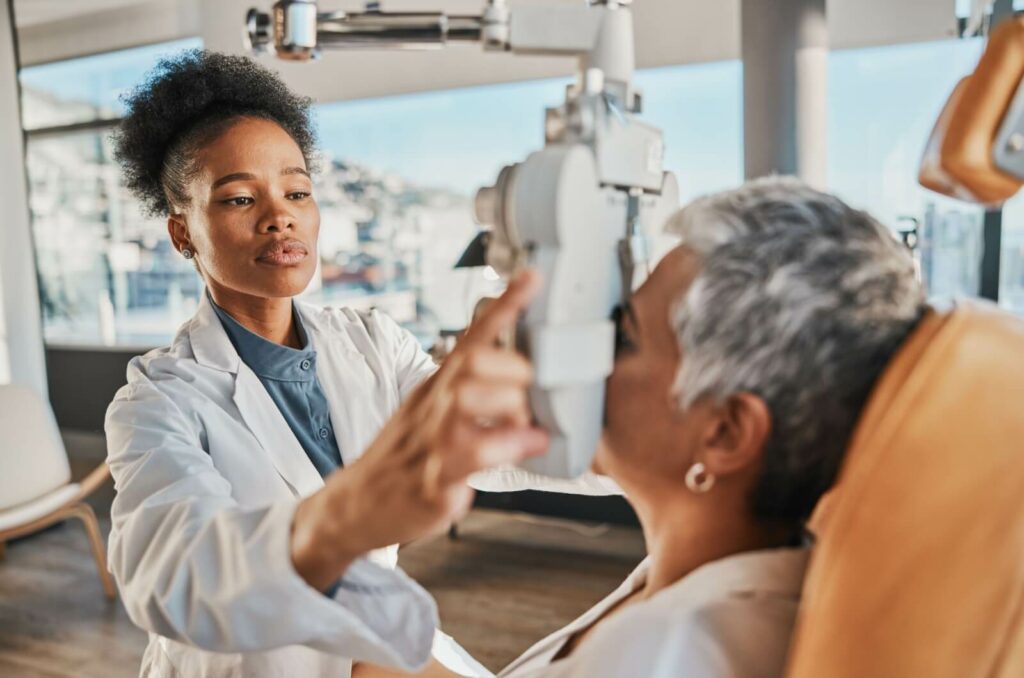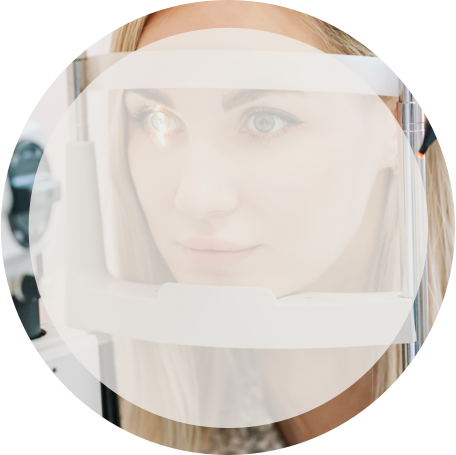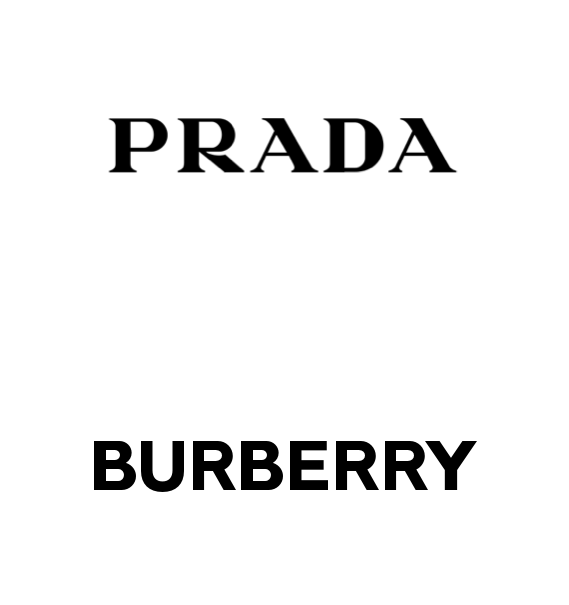Refractive errors occur when the shape of your eye prevents light from focusing properly on the retina. This can lead to blurry vision at certain distances, which can be corrected by glasses or contact lenses.
There are different types of refractive errors, like nearsightedness (myopia) and farsightedness (hyperopia). These happen when the shape of the eye causes light to focus in the wrong place on the retina. You can’t have nearsightedness and farsightedness in the same eye, but one eye can be nearsighted while the other is farsighted, leading to vision challenges at multiple distances.
Types Refractive Errors
Refractive errors are detected by eye exams. If your eye doctor detects a refractive defect, they can write you a prescription to help correct your vision.
Myopia
Nearsightedness occurs when the eye is too long or the cornea is too curved, causing light to focus in front of the retina. This causes distant objects to appear blurry while close objects are seen clearly.
Hyperopia
Farsightedness is the opposite—when the eye is too short or the cornea is not curved enough, light focuses behind the retina. This causes distant objects to look clearer, but close objects appear blurry.
Astigmatism
Astigmatism occurs when the cornea or the lens has an irregular shape. Like other refractive errors, the irregularities cause light to bend differently as it enters your eye.
With astigmatism, light may either be focused in front of the retina or behind it, causing blurry or distorted vision at all distances.
Presbyopia
Presbyopia is age-related farsightedness where the eye’s lens loses flexibility, making it difficult to see close objects. Everyone gets presbyopia as they age, but it becomes more noticeable after 45.
Why Do I Have Poor Distant and Close Vision?
In some cases, you may temporarily have blurred vision due to dry eye or eye fatigue
But if you have blurred distant and close vision, it’s likely that you have astigmatism, which affects vision at all distances, or you have more than one refractive error.
Can You Have Myopia & Presbyopia at the Same Time?
Since myopia affects the shape of the eye and presbyopia affects the eye’s natural lens, you can have both refractive errors at the same time.
The eye’s natural lens plays an important role in helping light focus on the retina. As the lens loses its flexibility, people may start to have trouble focusing on close objects.
When myopia and presbyopia occur together, people experience blurred distant and close vision.
Can You Have Myopia & Hyperopia at the Same Time?
Depending on the eye’s irregular curve, people may acquire either nearsightedness or farsightedness, which means these two refractive errors cannot occur together.
However, it’s possible to have myopia in one eye and hyperopia in the other.
What Is Anisometropia?
Anisometropia occurs when each eye has a different refractive power. This can lead to difficulty in fusing images from one eye, potentially causing blurry vision in various distances, double vision, or headaches.
- Simple anisometropia occurs when one eye retains a normal shape while the other has a refractive error. The difference can strain the eyes as they work to focus.
- Compound anisometropia involves both eyes having the same type of refractive error but to different degrees. For example, both eyes might be myopic, but one eye is much more curved than the other.
- Mixed anisometropia, also known as antimetropia, is a rare refractive condition where one eye is myopic and the other is hyperopic,
How Are Multiple Refractive Errors Treated?

A comprehensive eye exam can help your optometrist determine a prescription to correct your vision. Even in the rare case of antimetropia, your optometrist can prescribe a specific prescription to address the different vision needs in each eye.
However, anisometropia is known to cause lazy eye or crossed eyes, especially in children. Your optometrist may recommend specialized lenses to help manage eye misalignment symptoms.
To fix multiple refractive errors at the same time, you may need specialized lenses.
What Are Toric Lenses?
Since astigmatism often occurs with either nearsightedness or farsightedness, toric lenses can help correct the refractive errors at once. Toric lenses can be used in both eyeglasses and contact lenses.
After assessing your sight, your optometrist can write a prescription that includes spherical power to correct myopia or hyperopia and a special cylindrical lens prescription to address astigmatism.
What Are Multifocal Lenses?
Lenses can be made to correct nearsightedness along with presbyopia.
- Bifocal lenses use two optical powers for distant and near vision. A visible line typically separates the two different sections.
- Trifocal lenses add an intermediate vision correction zone between the near and far sections, ideal for tasks like computer work where middle-distance vision is needed.
- Progressive lenses are multifocal lenses without the visible line, offering a gradient of increasing lens power from top to bottom.
Prioritize Your Vision & Eye Health
If you experience any vision problems, don’t wait! Even though routine exams help catch and address refractive errors, sudden vision changes can indicate more serious underlying issues.
At Family Vision Care, we personalize your eye care to best meet your vision goals and needs. Contact our team to book your appointment and prioritize your eye health today!Refractive errors occur when the shape of your eye prevents light from focusing properly on the retina. This can lead to blurry vision at certain distances, which can be corrected by glasses or contact lenses.
There are different types of refractive errors, like nearsightedness (myopia) and farsightedness (hyperopia). These happen when the shape of the eye causes light to focus in the wrong place on the retina. You can’t have nearsightedness and farsightedness in the same eye, but one eye can be nearsighted while the other is farsighted, leading to vision challenges at multiple distances.
Types Refractive Errors
Refractive errors are detected by eye exams. If your eye doctor detects a refractive defect, they can write you a prescription to help correct your vision.
Myopia
Nearsightedness occurs when the eye is too long or the cornea is too curved, causing light to focus in front of the retina. This causes distant objects to appear blurry while close objects are seen clearly.
Hyperopia
Farsightedness is the opposite—when the eye is too short or the cornea is not curved enough, light focuses behind the retina. This causes distant objects to look clearer, but close objects appear blurry.
Astigmatism
Astigmatism occurs when the cornea or the lens has an irregular shape. Like other refractive errors, the irregularities cause light to bend differently as it enters your eye.
With astigmatism, light may either be focused in front of the retina or behind it, causing blurry or distorted vision at all distances.
Presbyopia
Presbyopia is age-related farsightedness where the eye’s lens loses flexibility, making it difficult to see close objects. Presbyopia is a normal part of aging. Everyone will develop it eventually, usually around 45.
Why Do I Have Poor Distant and Close Vision?
In some cases, you may temporarily have blurred vision due to dry eye or eye fatigue
But if you have blurred distant and close vision, it’s likely that you have astigmatism, which affects vision at all distances, or you have more than one refractive error.
Can You Have Myopia & Presbyopia at the Same Time?
Since myopia affects the shape of the eye and presbyopia affects the eye’s natural lens, you can have both refractive errors at the same time.
The eye’s natural lens plays an important role in helping light focus on the retina. As the lens loses its flexibility, people may start to have trouble focusing on close objects.
When myopia and presbyopia occur together, people experience blurred distant and close vision.
Can You Have Myopia & Hyperopia at the Same Time?
Depending on the eye’s irregular curve, people may acquire either nearsightedness or farsightedness, which means these two refractive errors cannot occur together.
However, it’s possible to have myopia in one eye and hyperopia in the other.
What Is Anisometropia?
Anisometropia occurs when each eye has a different refractive power. This can lead to difficulty in fusing images from one eye, potentially causing blurry vision in various distances, double vision, or headaches.
- Simple anisometropia occurs when one eye retains a normal shape while the other has a refractive error. The difference can strain the eyes as they work to focus.
- Compound anisometropia involves both eyes having the same type of refractive error but to different degrees. For example, both eyes might be myopic, but one eye is much more curved than the other.
- Mixed anisometropia, also known as antimetropia, is a rare refractive condition where one eye is myopic and the other is hyperopic,
How Are Multiple Refractive Errors Treated?
A comprehensive eye exam can help your optometrist determine a prescription to correct your vision. Even in the rare case of antimetropia, your optometrist can prescribe a specific prescription to address the different vision needs in each eye.
However, anisometropia is known to cause lazy eye or crossed eyes, especially in children. Your optometrist may recommend specialized lenses to help manage eye misalignment symptoms.
To fix multiple refractive errors at the same time, you may need specialized lenses.
What Are Toric Lenses?
Since astigmatism often occurs with either nearsightedness or farsightedness, toric lenses can help correct the refractive errors at once. Toric lenses can be used in both eyeglasses and contact lenses.
After assessing your sight, your optometrist can write a prescription that includes spherical power to correct myopia or hyperopia and a special cylindrical lens prescription to address astigmatism.
What Are Multifocal Lenses?
Lenses can be made to correct nearsightedness along with presbyopia.
- Bifocal lenses use two optical powers for distant and near vision. A visible line typically separates the two different sections.
- Trifocal lenses add an intermediate vision correction zone between the near and far sections, ideal for tasks like computer work where middle-distance vision is needed.
- Progressive lenses are multifocal lenses without the visible line, offering a gradient of increasing lens power from top to bottom.
Prioritize Your Vision & Eye Health
If you experience any vision problems, don’t wait! Even though routine exams help catch and address refractive errors, sudden vision changes can indicate more serious underlying issues.
At Family Vision Care, we personalize your eye care to best meet your vision goals and needs. Contact our team to book your appointment and prioritize your eye health today!
















